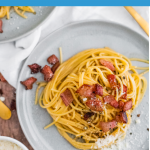Traditional Carbonara Recipe (Authentic Spaghetti Carbonara)
This Traditional Carbonara recipe will transport you to Rome with only a few simple ingredients. My four-ingredient (yes, only four) traditional spaghetti alla carbonara is a fast recipe everyone will love. I promise you, this will be one of the easiest pasta recipes you’ll ever make!

Carbonara is one of the four classic Roman pastas : carbonara, cacio e pepe, amatriciana, and pasta alla gricia. What makes this dish so special is the carbonara sauce – made of pecorino romano cheese and eggs. Pecorino cheese is a tangier relative of Parmigiano Reggiano – it’s the authentic choice for a true Roman carbonara. The creamy sauce is cooked by tossing it with the hot pasta. This way, you avoid scrambling your eggs. Trust me, this dish seems intimidating, but my step-by-step process will guide you to the best real carbonara ever. If you’re looking for more classic Italian dishes, try my Pesto Bruschetta or my Pesto Genovese.
Table of contents
Why You’ll Love This Recipe
- Authenticity – Transport yourself to Rome with my traditional carbonara recipe. Using authentic ingredients like guanciale and Pecorino Romano cheese, my recipe brings the flavors of Italy right to your kitchen.
- Simplicity – Don’t let the allure of carbonara intimidate you. My recipe breaks down the process into simple steps, ensuring anyone can easily and confidently create this classic dish.
- Irresistible flavor – You will love the perfect balance of creamy sauce, crispy guanciale, al dente pasta, and tangy cheese in every bite of this pasta alla carbonara. With just a handful of quality ingredients, my carbonara recipe will leave you craving more.
Ingredients
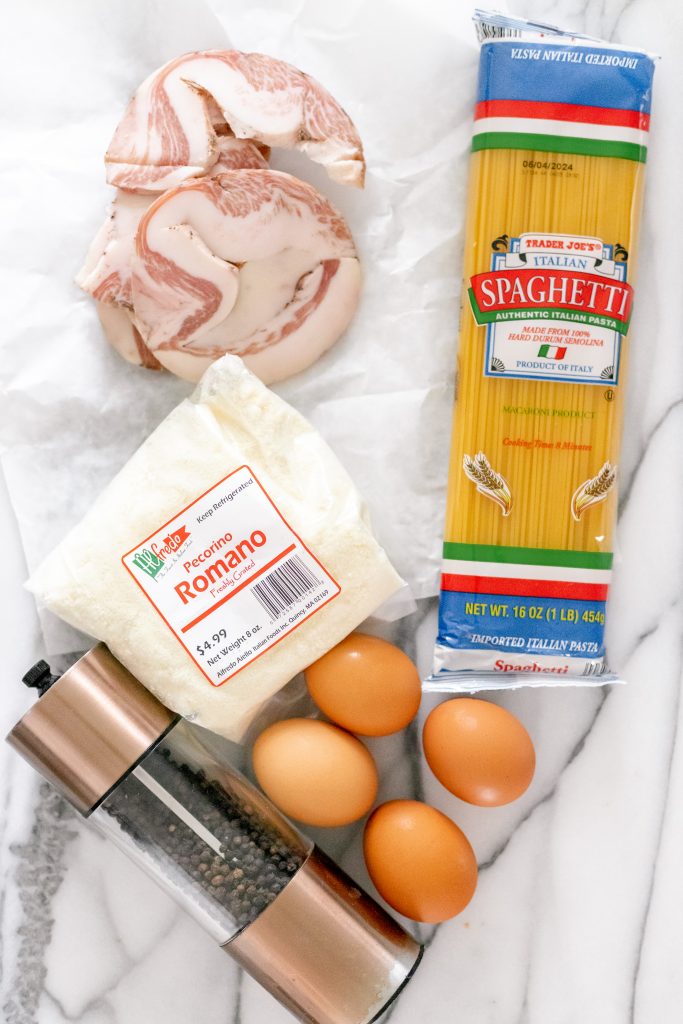
- Spaghetti – The classic pasta choice for carbonara. Its long strands are perfect for holding onto the creamy sauce and other flavorful ingredients. Cook pasta until it’s al dente to ensure it doesn’t become mushy when mixed with the sauce.
- Guanciale – A type of cured pork cheek that gives carbonara its rich and savory flavor. It’s like bacon but with a more intense taste. Cut the guanciale into small pieces and cook them until crispy for the perfect texture and flavor.
- Eggs – Eggs help create the silky sauce that coats the spaghetti in carbonara. They add richness and a silky texture to the dish. Whisk the eggs well before adding them to the pasta to ensure they don’t scramble. I don’t just use egg yolks – I use whole eggs in my recipe. This helps to avoid any food waste and to add extra protein!
- Pecorino Romano cheese – A sharp and salty cheese that adds a kick to carbonara. It’s grated on top of the dish just before serving, giving it a deliciously cheesy finish. For best results, skip the pre-grated cheese and grate your own. Use a microplane grater to grate the cheese for a smoother texture finely. For
- Black pepper – This spice adds a nice zing to carbonara, balancing out the richness of the other ingredients. It’s best to use freshly ground black pepper for maximum flavor.
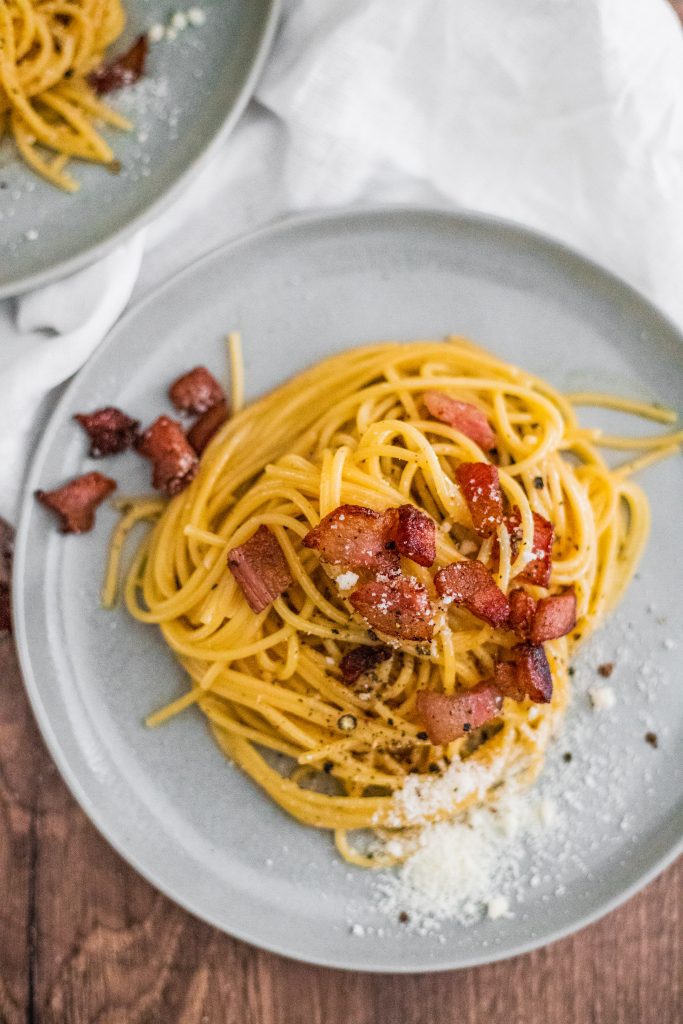
Substitutions
- Parmigiano Cheese – If you can’t find Pecorino Romano cheese, use Parmigiano Reggiano instead.
- Switch up the pasta – Try this out with a different type of pasta such as bucatini. The creamy sauce clings to different pasta shapes really well.
Guanciale Substitute
Regarding substituting guanciale, bacon is the most common alternative due to its similar texture and flavor profile, with a slightly smokier taste. Pancetta, another Italian cured pork product, can also stand in for guanciale with its comparable texture and taste, though it tends to be less fatty. For a vegetarian option, mushrooms or sun-dried tomatoes can lend a similar umami richness to dishes that traditionally call for guanciale.
Guanciale vs Bacon
Guanciale and bacon are both beloved cured pork products, but they differ in flavor and texture. Guanciale, made from pork jowl, offers a richer, fattier profile with a distinct porky taste, while bacon, typically from the belly of the pig, boasts a smoky, salty flavor with a crisp texture. While both add depth to dishes, guanciale’s unique richness shines in traditional Italian recipes like pasta carbonara, while bacon’s versatility makes it a staple in various cuisines worldwide.
Step by Step Instructions
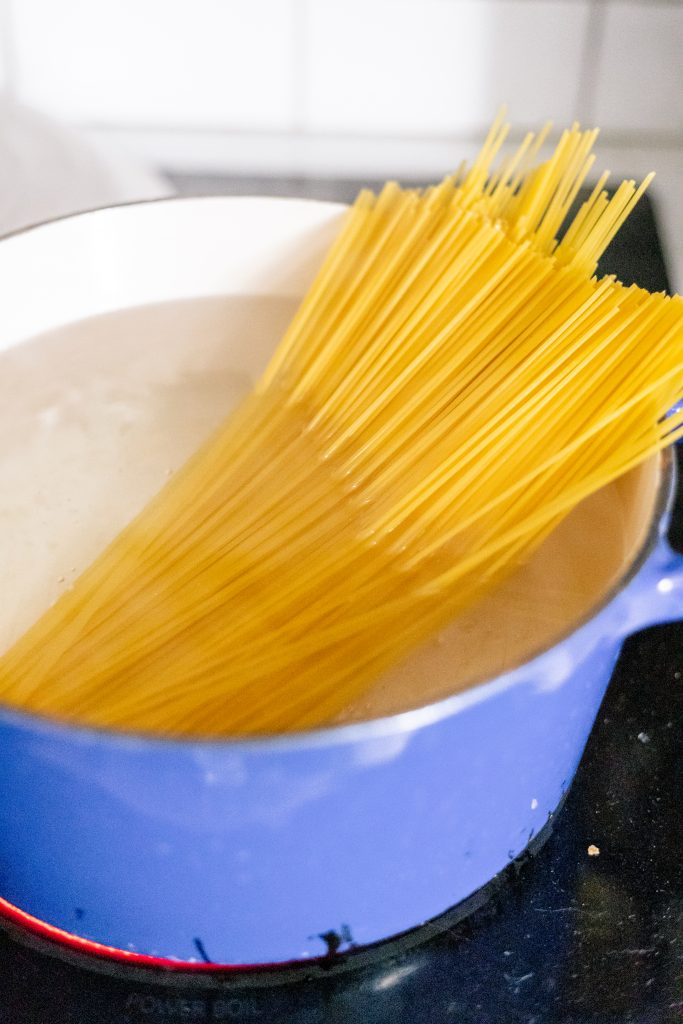
Step 1: First, let’s boil the water for the spaghetti. I do not salt my pasta water for carbonara normally, because the guanciale adds so much salt. If you aren’t using guanciale, feel free to add a little salt your water.
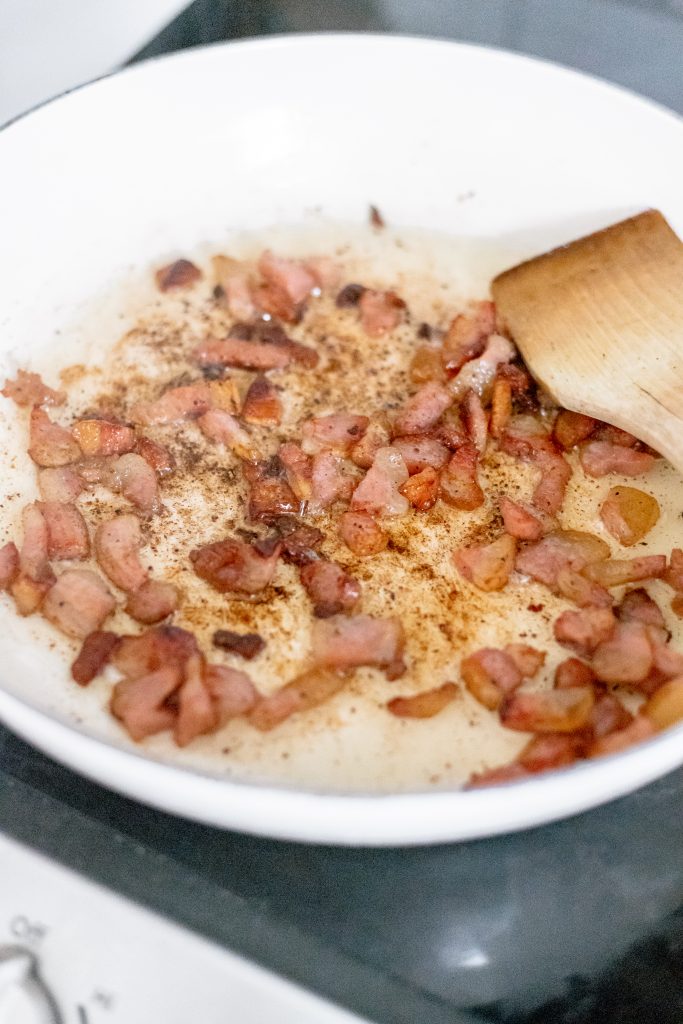
Step 2: Cut the guanciale cubes or slices, then cook in a large skillet over medium heat for about 2 or 3 minutes. Do not preheat the frying pan – guanciale should go into a cold pan. Stir occasionally (using a wooden spoon). I like my guanciale crispy, but you can cook it as crispy as you’d like. Just like bacon, the longer you cook the guanciale, the more the fat will sizzle and the crispier it will get.
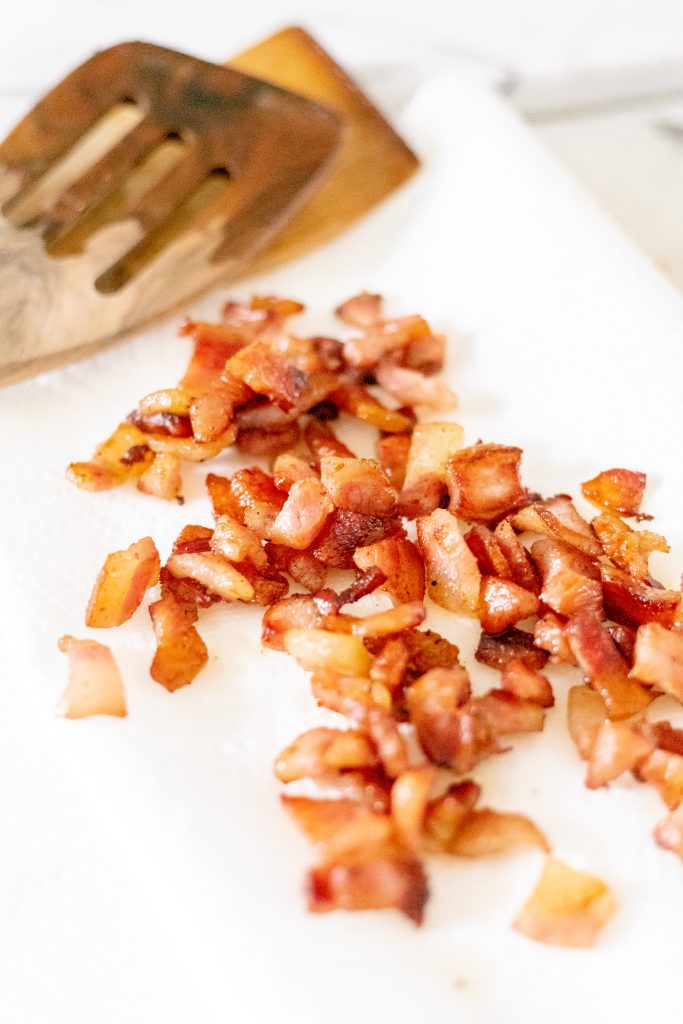
Step 3: When the guanciale has been cooked to your liking, remove it with a slotted spoon to a plate lined with paper towel. Keep the grease in the pan and set it aside off the heat.
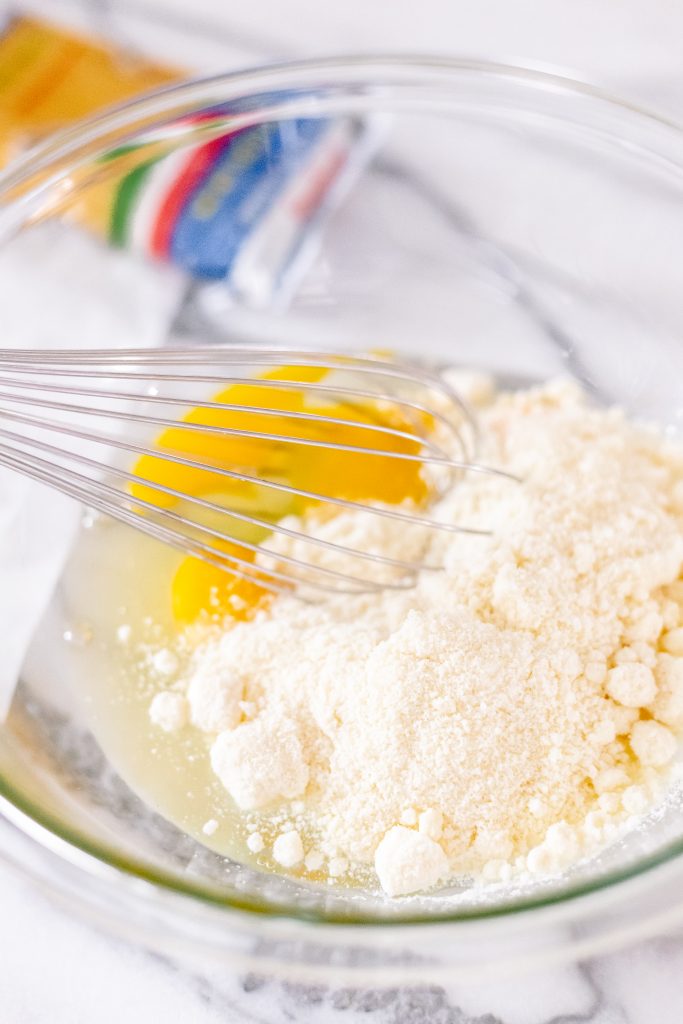
Step 4: In a mixing bowl, add the four raw eggs and the grated cheese. Using a whisk, mix the cheese and the eggs until t hey combine. Pecorino Romano cheese is a hard, salty cheese that adds great flavor! Add the freshly cracked black pepper, and continue to whisk until fully combined. The sauce will become smooth but will still be a little thick. We are aiming for a thick and creamy consistency.
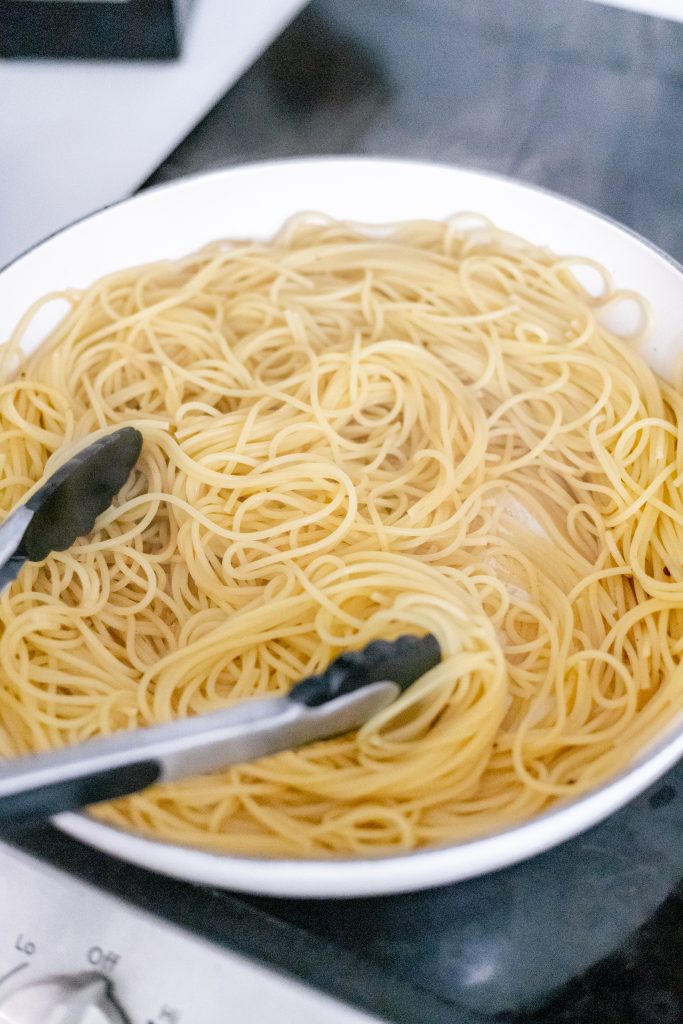
Step 5: Cook your spaghetti according to the package. Once it is finished cooking, drain the spaghetti and add it to the pan with the guanciale fat and heat it over medium heat. The spaghetti will start to sizzle. Turn off the heat immediately and get your tongs ready.
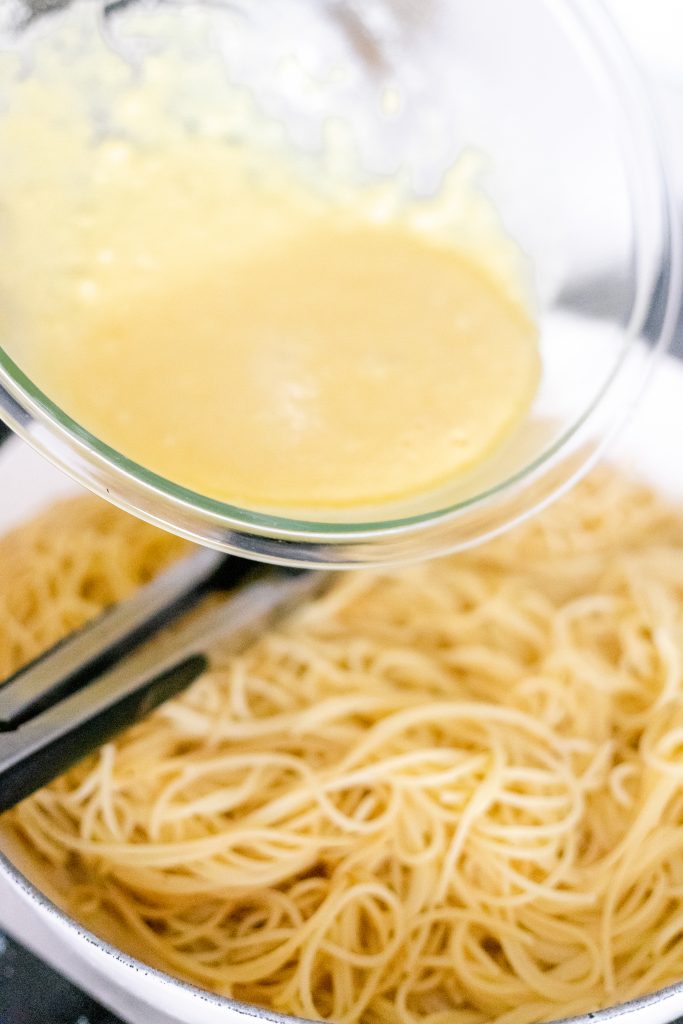
Step 6: Add the cheese and egg mix and quickly toss the spaghetti with the tongs. You need to do this very quickly or you will end up with scrambled eggs.
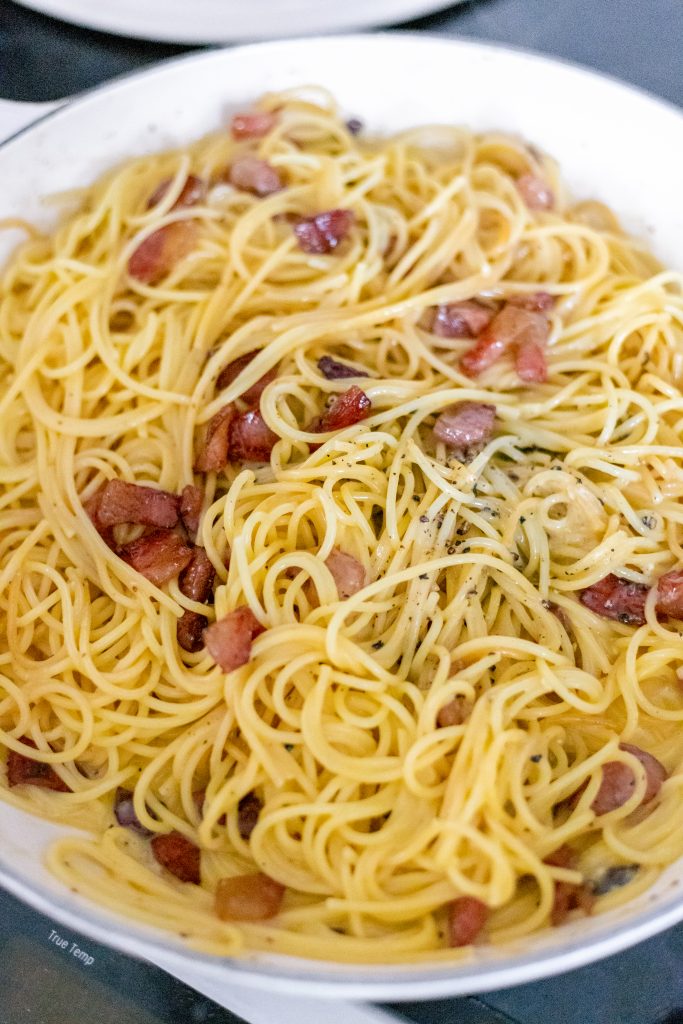
Step 7: Add the crispy guanciale back to the pan and continue to toss with the spaghetti and sauce.

Step 8: Serve immediately. Enjoy!
Tips and Notes
- Don’t overcook the guanciale – Watch the guanciale as it cooks to prevent it from becoming overly crispy or burnt. Aim for a golden brown color and a slightly crispy texture.
- Use freshly grated cheese – For the best flavor and texture, grate the Pecorino Romano cheese fresh just before using it in the sauce while the pasta cooks. This ensures maximum flavor and creaminess in the finished dish.
- Work with the eggs quickly – When adding the cheese and egg mixture to the hot spaghetti, work quickly to toss everything together. This helps prevent the eggs from scrambling and ensures a smooth, creamy sauce.
- Serve immediately – Carbonara is best enjoyed right after it’s prepared while the sauce is still creamy and the guanciale is crispy. Reheating leftovers may cause the sauce to become dry and the texture to change.
Recipe FAQs
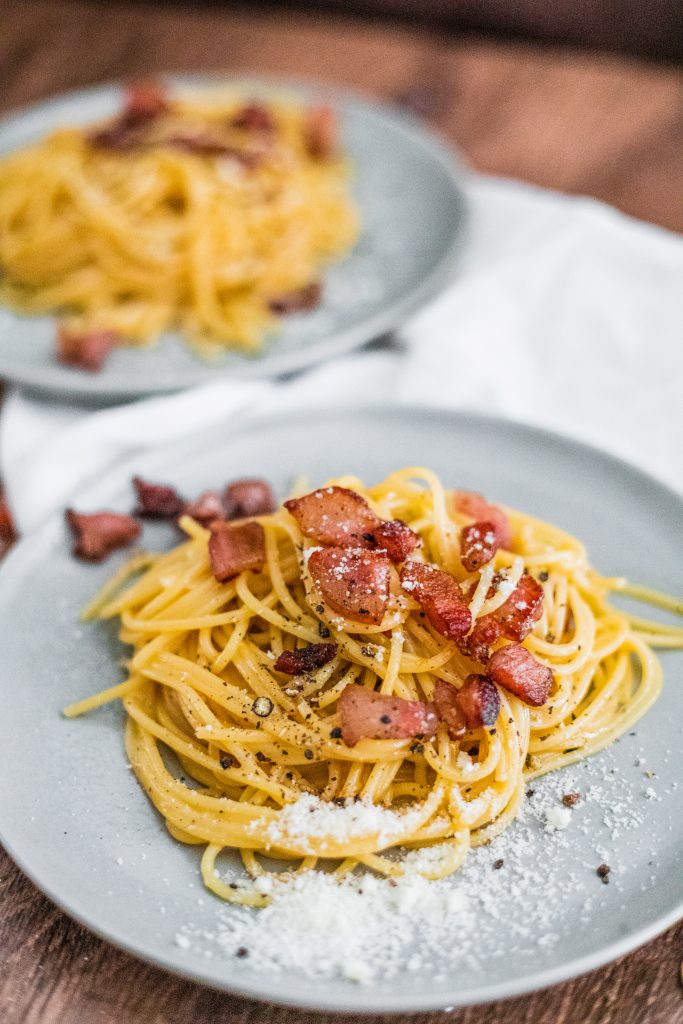
Serving Suggestions
- Wine pairing – For a classic Italian pairing, serve your carbonara with a crisp Pinot Grigio or Vermentino to complement the dish’s richness. If you prefer red wine, opt for a light-bodied Chianti or Barbera that won’t overpower the delicate flavors of the carbonara.
- Antipasto platter – Create an Italian-inspired antipasto platter with an assortment of cured meats, cheeses, olives, and breadsticks. The variety of flavors and textures on the platter complement the creamy richness of the carbonara.
- Bruschetta – Start your meal with a light and fresh appetizer like tomato bruschetta. The combination of ripe tomatoes, garlic, basil, and olive oil on toasted bread provides a burst of flavor that prepares the palate for the main course.
Storage and Reheating Instructions
Storage
- Allow leftover carbonara to cool, then transfer it to an airtight container and refrigerate for up to two days.
Reheating
- Warm the carbonara gently in a skillet over low to medium heat, stirring occasionally. Avoid the microwave to maintain the sauce’s consistency.
Enjoy, and as always, please let me know if you make this recipe – and if you do, don’t forget to tag @seasonedandsalted and #seasonedandsalted on Instagram!
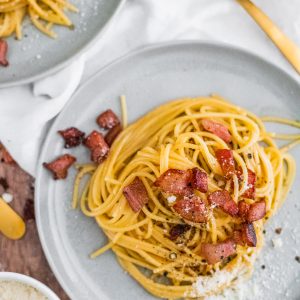
Authentic Carbonara Recipe with No Cream
Equipment
- mixing bowls
- non-stick pan
- stockpot
- whisk
- tongs
- stainless steel slotted spoon
Ingredients
- 12 ounces spaghetti
- 7 ounces guanciale, cubed or pancetta, or bacon
- 4 eggs
- 3.5 ounces grated Pecorino Romano cheese
- 2 teaspoons freshly ground black pepper
Instructions
- First, let’s boil the water for the spaghetti. I do not salt my pasta water for carbonara normally, because the guanciale adds so much salt. If you aren’t using guanciale, feel free to add a little salt your water.
- Cut the guanciale cubes or slices, then cook in a large skillet over medium heat for about 2 or 3 minutes.Do not preheat the frying pan – guanciale should go into a cold pan. Stir occasionally (using a wooden spoon). I like my guanciale crispy, but you can cook it as crispy as you’d like. Just like bacon, the longer you cook the guanciale, the more the fat will sizzle and the crispier it will get.
- When the guanciale has been cooked to your liking, remove it with a slotted spoon to a plate lined with paper towel. Keep the grease in the pan and set it aside off the heat.
- Time to make the sauce! This is so easy, you will love it! In a mixing bowl, add the four raw eggs and the grated cheese. Using a whisk, mix the cheese and the eggs until t hey combine. Pecorino Romano cheese is a hard, salty cheese that adds great flavor! Add the freshly cracked black pepper, and continue to whisk until fully combined. The sauce will become smooth but will still be a little thick. We are aiming for a thick and creamy consistency.
- Cook your spaghetti according to the package. Once it is finished cooking, drain the spaghetti and add it to the pan with the guanciale fat and heat it over medium heat. The spaghetti will start to sizzle. Turn off the heat immediately and get your tongs ready. Add the cheese and egg mix and quickly toss the spaghetti with the tongs. You need to do this very quickly or you will end up with scrambled eggs.
- Add the crispy guanciale back to the pan and continue to toss with the spaghetti and sauce. Serve immediately. Enjoy!

